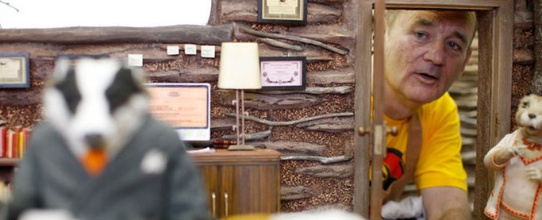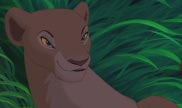Keeping Up with the Jonzes

Remember the days when kids’ movies were just made by some unknown fellow tinkering with some drawings in the back lot of a Disney studio somewhere? Well, it seems those days have been turfed out with VHS players and rollerblades, because we’re entering a new era where kids’ movies – particularly those adapted from already-popular kids’ books – can earn big bucks for Hollywood. After the first Harry Potter film made close to $1 billion worldwide, studio execs discovered a new golden equation:
Old children’s book with aged audience + new adaptation of book for young audience = craploads of money.
With both adult and child audiences covered, there was no limit to the amount of hundred dollar notes they would soon be blowing their collective noses on.
The fact is, no matter how much a film adaptation may defecate all over the original concept of a book, most fans won’t be able to resist going to see it, if only so they can spend the proceeding hour at the pub ranting over the absolute disgrace that was made of (insert author’s name here)’s legacy. But with such films now being churned out faster than you can say ‘absolute stinker’, from The Narnia Chronicles to Charlie and the Chocolate Factory (again), studios need more than just a ridiculous budget and a well-thumbed copy of CS Lewis to make a hit. They’ve now decided they need critical cred from the cinematic world as well. Enter the hip director.
The seat of every indie film aficionado’s pants got a little damp on viewing the first YouTube cuts of Wes Anderson’s Fantastic Mr. Fox trailer. That’s right, the crazy kook behind The Royal Tenenbaums and The Life Aquatic with Steve Zissou was turning his hand to that other crazy kook Roald Dahl’s classic tale of crafty fox versus meanie farmers. So when the two kookinesses collided this month in cinemas everywhere, what happened?
Unanimous critical acclaim, for starters. I’ve not seen a review in any publication that gave it less than four stars. Personally, I haven’t had so much fun watching an animation since Monsters Inc. But I guess the real question is, was it good for the kids? GQ‘s Andy Morris thinks not. “At the screening I attended, the kids in the audience seemed more excited by playing in the aisle or brandishing balloon swords than by what was going on onscreen”, said Morris.
At the end of the day, kids will be kids – not appreciators of satire or subtle explorations of family angst, not discerning connoisseurs of visual effects, but kids. Give them a coloured balloon and an ice cream at the movies and they’re generally happy as Arnie at a barbell convention.

But that’s certainly not what Spike Jonze thinks. The 39-year old director of Adaptation and Being John Malkovich has taken the ‘kids movie that’s really for adults’ craze one step further with his remake of Where the Wild Things Are, due for release December 11. The original ‘60s children’s book by Maurice Sendak was only 10 sentences long, so to say Jonze didn’t have a lot to work with is an understatement. On the same token though, despite its brevity, the book is practically the Bible of children’s stories. I remember reading it in primary school despite being born 20 years after its original publication. If Jonze stuffed this one up, he would be crucified.
The film was released in the US on October 13 and reviews thus far have been stellar, so there’s every chance Jonze has pulled it off with as much panache as Anderson did with Mr Fox. But I have to say, when I saw the trailer at the cinema a few weeks ago, my reaction was simply, “I’m sorry, what the hell was that?”
Maybe it was the fact that Jonze decided to make the film live-action rather than animation. A desolate landscape and 10-foot high, misshapen creatures stalking you across it – Christ, I felt like I was on a bad peyote trip. For those too young to reassure themselves with the fact that maybe they’d just been slipped something nasty and it would all be over soon, surely it would just be downright terrifying. Warner Brothers must’ve thought so too, having recalled the movie for re-cutting and re-shooting, delaying its release.
But Jonze stuck by his film, telling Film.com’s Cole Haddon that he was “just trying to make a movie that feels true to what it feels like, at times, to be nine years old”. Sure, I can dig it. The beasties are symbols of the inner turmoil you’re not yet emotionally mature enough to deal with. But can the kids? Or will they just be scared shitless in bed at night thinking of that thing with the mong face coming to carry them away in the night?
Tim Burton, a serial producer of the kids’ movie that’s really for adults, is also giving it another go with his remake of Alice in Wonderland, slated for release in March 2010. The film is a typically gothic combination of Lewis Carroll’s Alice’s Adventures in Wonderland and Through the Looking Glass as well as Burton’s own imaginings. It features serial Burton favourites Helena Bonham-Carter and Johnny Depp, and, like his trippy remake of Charlie and the Chocolate Factory, will no doubt be an artistic spectacular and box-office hit. Visuals already released of the film certainly attest to that.

For me and most other adults I know, Tim Burton films are an acquired taste, like wine, pate or coffee. I can’t do without my life-saver morning latte now, but I remember ordering a cappuccino at 10 years old only to eat the chocolate-covered foam from the top and grimace in disgust when I got to the coffee. Similarly, I found Burton’s Charlie to be imaginative and charming, if lacking a little of the book’s heart. But watching The Nightmare Before Christmas in primary school, my sister and I made the joint decision to turn it off halfway through. This was because we found the whole thing to be a) quite creepy and b) quite boring.
The amazing thing about Burton’s films, as seems to be the case with Jonze’s Wild Things, is the artistic vision and the production values it takes to create them. These are things you can really only appreciate when you’re old enough to have been to a million crap, non-imaginative movies. As well as having the words ‘cinematography’, ‘imagery’ and ‘symbolism’ vigorously drummed into you in high school English.
So if you’re thinking of taking kids to these movies, think a little harder – this isn’t the shiny, happy world of Toy Story. What these directors have effectively done is created a new genre of films – one that’s certainly not without its merits, as the five-star reviews demonstrate. But 90 minutes of family fun they ain’t.





Recent Comments